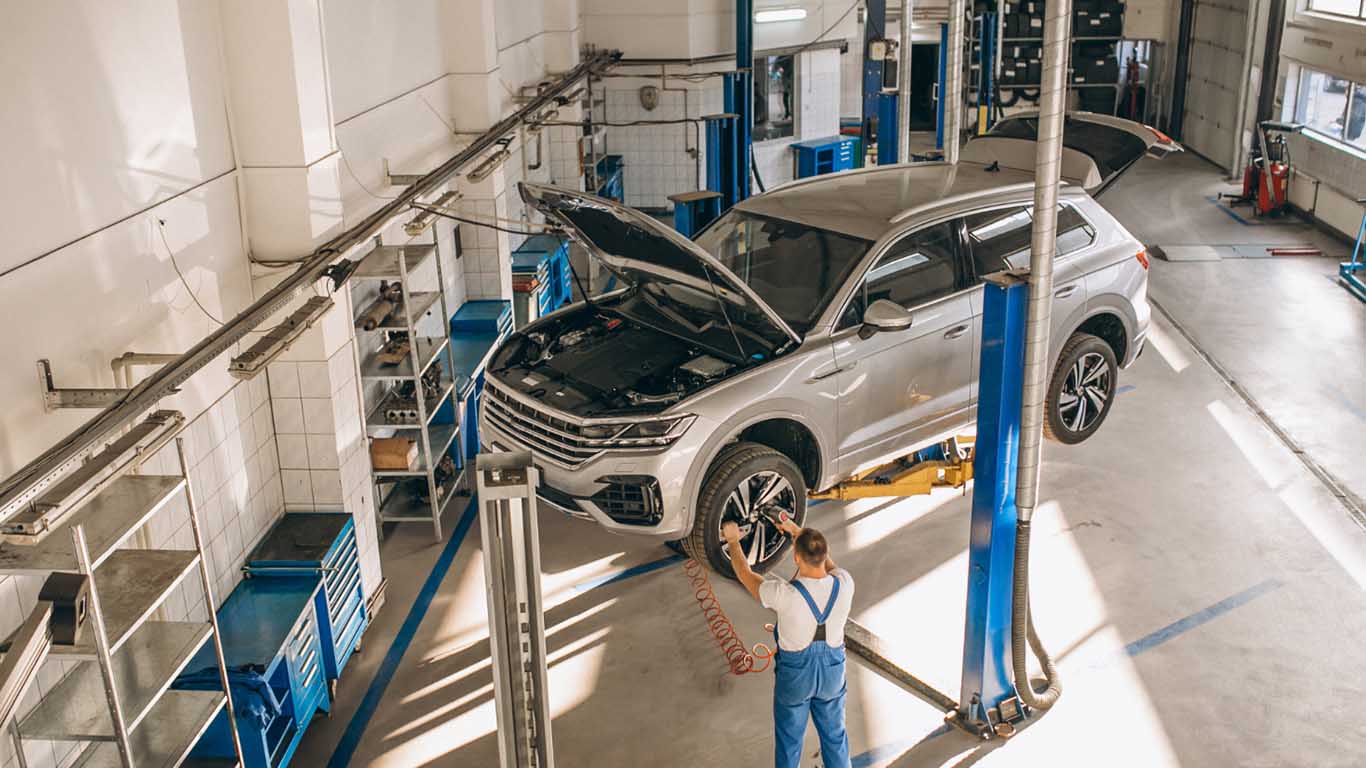The automotive industry is undergoing a dramatic transformation. Once dominated by mechanical engineering and internal combustion engines, today’s automotive landscape is increasingly shaped by cutting-edge technologies, environmental concerns, and changing consumer expectations. As we look to the future, several innovations are driving this shift and redefining what it means to drive.
1. Electric Vehicles (EVs): The Road to Sustainability
Electric vehicles are at the forefront of the automotive revolution. With growing awareness of climate change and stricter emissions regulations, automakers are investing heavily in EV development. Companies like Tesla, Rivian, and traditional giants such as Ford and Volkswagen are racing to electrify their fleets.
Battery technology is rapidly evolving, with advances in lithium-ion chemistry, solid-state batteries, and fast-charging infrastructure. These developments are helping to alleviate range anxiety and reduce charging times, making EVs more practical and appealing to the mass market. In the coming years, electric vehicles are expected to become more affordable, with many countries planning to phase out internal combustion engines entirely.
2. Autonomous Driving: The Future of Mobility
Autonomous vehicles (AVs) promise to revolutionize how we move from point A to B. Self-driving technology, powered by artificial intelligence, sensors, and machine learning, is progressing rapidly. Companies like Waymo, Tesla, and Cruise are already testing AVs on public roads.
While full autonomy (Level 5) is still under development, features like adaptive cruise control, lane-keeping assist, and self-parking (Level 2 and 3) are already available in many modern vehicles. These technologies aim to enhance road safety, reduce human error, and improve traffic flow. However, regulatory frameworks, ethical considerations, and technological challenges remain before autonomous driving becomes mainstream.
3. Connected Cars: Smarter, Safer, and More Efficient
Connectivity is another key innovation shaping the automotive industry. Vehicles are becoming increasingly connected through the Internet of Things (IoT), enabling real-time data exchange between cars, infrastructure, and cloud services.
This connectivity allows for features like over-the-air software updates, remote diagnostics, predictive maintenance, and vehicle-to-everything (V2X) communication. As 5G technology becomes more widespread, cars will be able to communicate faster and more reliably, paving the way for smarter traffic systems and improved safety.
4. Sustainable Manufacturing and Materials
The shift toward sustainability goes beyond tailpipe emissions. Automakers are rethinking how vehicles are designed and manufactured. This includes using recyclable and eco-friendly materials, reducing water and energy usage in factories, and adopting circular economy principles.
Brands like BMW and Volvo are exploring the use of recycled plastics, vegan leather alternatives, and natural fibers. Meanwhile, advancements in additive manufacturing (3D printing) are enabling more efficient and customizable production processes.
5. Mobility as a Service (MaaS)
The concept of car ownership is also evolving. Younger generations are more inclined toward flexible, shared mobility solutions. Mobility as a Service (MaaS) integrates various transportation modes—such as ride-hailing, car-sharing, and public transit—into a single, user-friendly platform.
This trend is encouraging automakers to diversify their business models. Companies are investing in subscription services, on-demand mobility, and partnerships with tech platforms to cater to the growing demand for convenience and flexibility.
Conclusion
The automotive industry is at a crossroads. As innovation accelerates, the cars of tomorrow will be cleaner, smarter, and more autonomous than ever before. While challenges remain, the convergence of technology, sustainability, and changing lifestyles is driving the industry toward a more efficient, accessible, and eco-friendly future. For consumers, manufacturers, and society as a whole, the journey ahead is not just about getting from one place to another—it’s about redefining the very nature of mobility.
Share this content:


.png?Expires=1831201328&Key-Pair-Id=K2ZIVPTIP2VGHC&Signature=SEjtn6txQhBROozJx~xeV26tA2gvPGCLzDwm98LrsvzFKH1tyQm4RUA1xN-F4tAft7elG-~47mtvvP352HRqKLMzZa5xl4x3la2ttb6WjMTcSeg82oe5qyBe3IJKG49KZTe1g2pGBr3rlqZMhPsYFWMx1ymUN~yLv-LSpPcRZoqu6VuhgQImCbxuUFv7OrcQ1AvtIfivnREKNo6xZkhXlKqRNiBvuZ1sDiupNaWsoePYIRRv2R6AUIZowoHmIdN0yQ5m9DeMtiYP6nkAEnXVpcqz9xlU~nZpUZRuq~c4KDegjltQfHdtZKdN5FNYeAv6jWe3NDqIjLBsOy-SRNI11g__)
.png?Expires=1831201089&Key-Pair-Id=K2ZIVPTIP2VGHC&Signature=bO3c3n6wBi1tofb5oreXEYqZ2pxcC7G3AnSj6IYzWgjuv~YazSirYwvXqvdiVBrpop~wkHxF~RJadpJ~ifXLXQsKSwqmPXSFrgC8AaTvxYv7SeclekHybCwxMTqUinZO-i9gzIpE4qvj7QmDM~iX~puwnmitP8CZWIagoosPFzo3xlT0fBBopdZ0b9oNnjEnoU3ZPOdpr55bURSbWQ1CoQOmyxd8sJOSF7~uWEuRfzXlPszVmqTs9lyRDdNKJHaIT~BejdAT-r0KCFOmTqgy4xXlCqdnLPKjJrF9kP8Mw5N6JsNpIBMUMYn~I89HhwTPP7KjCwXsZOnILl3kzVkPiA__)
.png?Expires=1831200784&Key-Pair-Id=K2ZIVPTIP2VGHC&Signature=gpmSVvqa4ea-OVmBn91ZxpCqnanZwgslnoCgyiENf8K0nB9qzM8UulATTQQW2BcBNOBAASCwQpScjdTAzJklEovJgtM6yqHascvkHjHBy8hmes4YElfEl5rDNVfQd-EHmYxTligYoKYJuQMTYuErB2M9hahJILL8~re5xBjfO046LrKEY-mak16KY7xZ08JJOZ2x7icanPMoZX-eTFcl1DeQOeQLIcDHROYrYeqelx~PbU7ai7njkaAZJ2dC4D0GKXzqYRStAU6s2QoBmIvKEsKqhET~PQJDzHJrl8fE0sjX5mZyLtIzKcxy0riuzBgNZv0hzEJyNgLxb3Pc6zX9nA__)
.png?Expires=1831194015&Key-Pair-Id=K2ZIVPTIP2VGHC&Signature=pWet~qpB5T6ncxp81BmREmF71-WEytwq3yyHa589pkwwgyoTm8CDIO1lFOeDKOIwYkfefoZT43L9vyiaiUDqkWKrsQkEUd13jR~Z6Al2L-qcTqADHQc7v511cEtDVbTokQJNMYFCuaPD9bJdIn9~reyjWPg8Ph2ZfiL0NPOP362Nv9DjVdy7VYbp4srrDPxArScWVKRz4ivhzdugl7JBOZ4GG3NF~Eq0iRxfxS5Bstx2Q3D6SIZGgmOkOaabDuFli4hDjTBiuDUXZz1e8wF0S8lcLgHJmHQAjset~hqN8RYGkBgr2-jiPl9QzEiCgE7qjAub-jEZ8A9O~rZIXBmpxg__)
.png?Expires=1831193798&Key-Pair-Id=K2ZIVPTIP2VGHC&Signature=NUsz7rTdQNCrha6uTMY7O1ZcT80kav6YVgii2kKJMcU49TK~d81YnIWxYxN2~HT-Esd9Taq3Vq3xwHgML18SqIotJxUV1q7gt6rtpjA~G3nH0NJpa~a~JZ7Gi4OsTRDHr2v6R8foFObjeZyNw92fltfreD-VPNkfQlTSGzLRG5Ooe0oY0ibIISx46XWZ0plXNaaYci4Hv~lGykQcgdRhhQA-P60~1oDXxQykC4R8w1ZVsYMI4zhVoNreQtY6dkTJdV081CivUm~7Vi4h~-4lCwDhSm284g2DzADYvYrH1PrE5r~81vefk5jPmGSHLHnmLMJopCYswXCDphn7MLWtGA__)